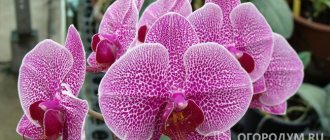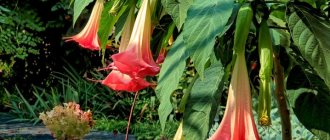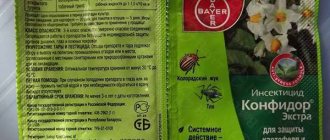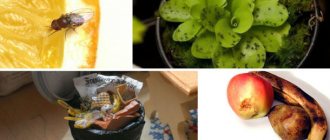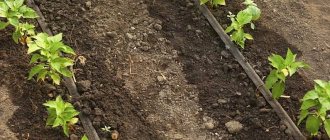As is known, the rapid formation of roots contributes to better rooting of cuttings. You can always find special root formation stimulants on sale. However, expensive drugs can be easily replaced with simple products that are always at hand.
Not all plants are able to quickly form roots; some plant cuttings take too long to develop roots. If we want to speed up this process, we need to help the plant, push it to form roots. We want to tell you about popular folk methods of stimulating root formation, tested from our own experience by more than a dozen summer residents.
Rooting cuttings in aloe juice
The benefits of aloe vera (in our country this plant is better known as agave) for humans is a well-known fact. Thanks to the beneficial substances and vitamins it contains, it has a restorative and healing effect on the human body. Aloe can bring no less benefit to plants, improving their root formation. It is believed that the maximum effect comes from the juice of plants that are at least 3 years old, so for stimulation, take the lower - more mature - leaves and carefully cut them with a knife.
After cutting, wrap the leaves in a plastic bag and place them in the refrigerator for several hours. Under the influence of low temperature, the formation of biologically active substances begins in the leaves - the beneficial effect of aloe is enhanced.
After this, squeeze the juice out of the agave and add 5-7 drops to a glass of water. Leave the cuttings in the resulting solution for 2 days. After this time, transplant them into the ground.
How to harvest green cuttings?
The organs of vegetative propagation in plants are shoots and rhizomes. In our case, we are talking about propagation by stem cuttings (shoots with buds).
The length of the cutting depends on the type of plant, but most often healthy shoots of about 10 cm with 2-3 internodes are harvested.
In lilac, rhododendron, mock orange, rose, and hydrangea, cuttings with one axillary bud take root well.
When cuttings in the first half of summer, the middle part of the branch is usually used, so they need to be cut with a margin. If you are cutting plants late, towards the end of the season, it is better to take the upper part of the shoot.
If the leaves of the plant are large, it is necessary to cut them in half to reduce the area of evaporation and prevent the cuttings from drying out.
To speed up the process, cuttings can be treated with root formation stimulants (Kornevin, Heteroauxin, Zircon, etc.). It is important that the product does not get on the leaves. Carefully look for the concentration of the solution, instructions for use and other important information on the packaging of the drug. If you do not follow all the manufacturer's recommendations, you risk destroying the cuttings.
Rooting cuttings in honey
Honey has many beneficial properties, which are used not only to treat people, but also to stimulate root formation in plants.
To obtain a natural stimulant, dissolve 1 tsp. honey in 1.5 liters of warm water. The water temperature should not exceed 40°C, otherwise the beneficial properties of the sweet product will be destroyed. Place the cuttings in the prepared solution for half a day, and then transfer them to a container with clean water or plant them in the ground. Thanks to honey stimulation, the roots of the cuttings will appear much earlier.
When are green cuttings rooted?
The ideal time for vegetative propagation of perennials is usually considered to be the beginning of summer (June - the first half of July), when the plants are in the active growth phase and have enough strength to form roots. However, the specific timing of harvesting cuttings depends not only on the genus, but also on the species, and sometimes also the variety of the plant.
May June
In May-June, cuttings of most shrubs that bloom in spring or early summer are prepared.
June July
June-July is the “hottest” season for green cuttings. In the first half - mid-summer, cuttings are taken from conifers, as well as many summer-flowering shrubs.
July August
In the second half of summer, it is not too late to start cutting those shrubs and trees that are capable of growing a new root system in a short time.
Green cuttings of lilac and clematis
In lilacs and clematis, the timing of cuttings is tied to the flowering period and the type of plant.
Rooting cuttings in willow water
It would seem, how can willow help cuttings and speed up root formation? The reason is that willow bark contains salicin, a natural compound from which salicylic acid was first obtained. For plants, this substance is a natural phytohormone that can increase seed germination and accelerate root formation of cuttings.
To obtain a natural stimulant from willow, cut young shoots of the tree and place them in water. After roots appear on the branches, remove the willow from the container and place the cuttings there instead. If necessary, add clean water and mix it with the willow.
In the inner layer of poplar bark, just like in willow, salicin is present. For this reason, the effect exerted on cuttings by poplar and willow is very similar. Take young poplar branches, cut them into 7-8 cm pieces and pour boiling water over them. Place in a dark place for 12 hours to allow the solution to infuse, and then strain it. Place the cuttings into the resulting root formation stimulator.
Rooting plants
Propagation of plants by cuttings is called vegetative propagation. This method is possible due to the unique property of plants for unlimited growth, the preservation throughout the entire plant life of the so-called primary cells, which give rise to all new tissues. The main advantage of vegetative propagation is that the daughter plant completely retains the properties of the mother plant, the characteristics of the variety, and decorative qualities, and at the same time allows one to obtain a new plant relatively quickly.
Fast-growing, overgrown plants need to renew the bush and periodically replant their cuttings - this will ensure their impeccable decorative appearance. Vegetative propagation is also important here.
Some plants that grow from rosettes or produce root suckers can be easily propagated by separating the offspring or dividing the bush - ferns, cordylines, dracaenas, calatheas.
Vegetative propagation also includes cloning, i.e. obtaining a new organism from a group of cells, but it can only be produced under special laboratory conditions.
Let's try to outline the general universal principles of vegetative propagation.
Suitable for rooting are branches, cuttings - fragments of a stem with several leaves, buds, and some plants have leaves (usually succulent, fleshy). For selection, we select healthy, adult branches and leaves that have matured, grown to normal size, and have acquired the characteristics of an adult plant - leaves of a large variety, stem thickness characteristic of an adult plant, and in woody forms, coarsened, partially lignified shoots.
For soft herbaceous plants (tradescantia, begonias), the cuttings are soft, for shrubby and woody forms (ficus, myrtle, citrus) - we select lignified branches. Some succulents, violets, decorative leaf begonias, gloxinias, and cyperuses reproduce by leaves. Some plants (Schlumbergera - Decembrist) reproduce by sections of a modified flat stem.
The best time for rooting is spring, early summer, from April to June. However, plants with a winter pause (figs, myrtle, citruses, laurel) can be rooted in the fall, but the result will still be in the spring - the process of root development slows down, and it is necessary to observe a decrease in temperature for such options. It is practically useless to root cuttings from plants just brought from Dutch nurseries. A newly purchased plant must adapt to its new location for 4-6 months before you can propagate it.
To root, cut the cuttings into several buds (3-5) long; make a cut under the bud with a sharp knife or sharp scissors. Razor, pruning shears. A cut with a blunt sheath crumples the walls of the conducting vessels, which impairs water flow in the cutting. We cut off the lower leaves, shorten the upper leaves of plants with large leaves to 30-10% to reduce evaporation and prevent the cuttings from drying out. We remove all buds, flowers, fruits. For plants that bloom periodically, it is better to choose a time free from flowering - the time when the active growth of the green part begins.
After cutting, ficus cuttings must be washed with water, as the juice released in the air forms a plug that blocks root formation. For plants with succulent stems and leaves, it is useful to dry the cut and blot it with a dry cloth. Fast-fading ones - tradescantia, balsams - must be placed in water immediately after cutting. Violets, succulents, and peperomia should be air-dried for some time (up to a day). It is useful to soak cuttings with woody bark for 4-6 hours in water, preferably with the addition of stimulants.
A prerequisite for successful rooting is maintaining constant high humidity of the air and substrate. In this case, excessive liquid, on the contrary, can cause rotting. Watering is generally needed once at planting, and moderately. Next, you just need to monitor so that drying out or, on the contrary, rotting does not occur. For these purposes, you need to create a miniature transparent “greenhouse” - this can be a plastic bag, a glass or plastic jar, a glass, or special greenhouses for seedlings.
And of course, the most important condition for rooting is sufficient access to light. It is desirable that the light be diffused. Direct rays may cause burns and overheating. If natural light is not enough, you can use additional lighting.
Basic methods of rooting.
The easiest way to root plants is to place them in a glass of water. This method is suitable for easily rooted plants (tradescantia, impatiens, ruelia, cyperus), as well as for most plants when rooting in spring (ficus, myrtle, passionflower, abutilon, begonia, geranium).
In this case, the key to success will be a comfortable temperature - 20-25 degrees, not lower. You can add a piece of coal or an activated carbon tablet to the water to protect against decay. You can drop growth stimulants, root formation stimulants into water, or dip the ends of the cuttings in root. Usually, after 2-3 weeks, a whitish thickening called callus appears at the tips of the stems, and soon the roots appear. In different plants, roots appear from the cut, in others from the lower bud of the cutting, in others along the entire length of the stem, lowered into water.
Cuttings should be planted in the soil when the roots are sufficiently marked, but not too overgrown. Insufficient root development will not allow the young plant to provide the required volume of water supply. Such plants can be planted even immediately after the callus appears - but it is necessary to plant it in a greenhouse, cover it with a transparent bag or jar to ensure constant high humidity. Cuttings with overgrown, too long roots are more difficult to plant - as the roots are easily damaged, they need to be gently spread throughout the depths of the pot, gradually sprinkled with soil and carefully compacting the soil. And such plantings will not be harmed by frequent spraying and high air humidity for the first time.
Some plants that branch poorly or have thin stems should be planted several times in a pot so that the plant grows into an attractive decorative bush (syngoniums, Tradescantia dracaena sandera (bamboo)). Others, on the contrary, do not tolerate crowding and proximity - citrus fruits, abutilons.
Another way to root is in an inert, loose medium: perlite, vermiculite, coconut fiber, sand (the sand should be clean, sterile, ideally calcined, or washed with a solution of potassium permanganate). Myrtaceae, azaleas, and gesneriaceae take root well in an acidic environment - sphagnum, peat. To root in these substrates, it is necessary to create a greenhouse to maintain high, constant air humidity. When roots appear, the cuttings are planted in a small pot with soil, as after water rooting.
This method increases the percentage of rooting, suitable for capricious exotic plants, woody, delicate, easily rotting, for off-season rooting, at low temperatures.
A very convenient and reliable method is in a peat tablet. It is first soaked in water and it swells. The peat tablet contains a sterile nutrient medium, wrapped in non-woven material. At the top there is a recess for a cutting or seed (they are also great for seed propagation). The percentage of rooting using this method is very high, even for capricious and exotic ones. It can be considered the most reliable and convenient. The main thing here is not to make a mistake with the quality of the tablet.
The peat tablet with the cutting is placed in a transparent cup or bag. When the roots begin to grow through it, rooting has occurred, you can replant it to a permanent place. In this case, the fabric is not removed, it will not interfere with the development of roots; the entire capsule is planted.
And one of the most popular methods of rooting is in a pot, a glass, in the soil. Here we prepare the soil mixture as for an adult plant, but we make it looser by adding 20-30% raising agents - perlite, vermiculite, moss, coconut. Be sure to arrange high drainage. You can root in transparent containers - it’s so convenient to observe the process, you will see when the roots appear.
Stimulation of root formation.
The main drugs that increase the speed and quality of rooting can be divided into 2 groups:
- hormones that regulate root formation - they trigger the active process of growth of new cells. Such hormones are contained in each cutting in any case. We only increase their concentration to make the process more intense.
— stimulants-adaptogens of general action. They increase the overall activity of the plant organism, increase its immunity, growth rate, and resistance to adverse environmental factors and diseases.
These groups of drugs can be combined, but in both cases the dosage must be strictly observed, because excess leads to the opposite - inhibition of processes. The principle “it is better not to report than to shift” applies here.
After rooting, the plant must be planted in a permanent place, in a small pot corresponding to the size of the young plant. Gradually accustoming to life without a “greenhouse”, it is necessary to protect from sudden changes in humidity, light, and temperature.
| < Previous | Next > |
Rooting cuttings in egg white
Take one egg white and fill it with 200 ml of warm water. Let it sit for a week, then dilute it with water in a ratio of 1:2 (protein:water) and pour the solution over the cuttings planted in the ground. If necessary, watering can be repeated.
Not all summer residents are ready to try this method of improving the root formation of cuttings because of the far from pleasant smell that appears after the protein has been infused for several days.
Which means of stimulating root formation do you prefer – store-bought or natural?
How to root cuttings?
In addition to all the tips listed above. It is worth remembering the following rules for cutting plants:
- Firstly, the less capricious a crop a grower deals with, the greater the chance that the cutting will take root even in plain water, but the classic rooting method is in the ground.
- Secondly, species whose natural habitat is tropical forests or swamps form roots well in water, but it is better to immediately place the “resident” of arid places in the soil.
Beginners often think that rooting in substrate is more difficult than in water, but this is not true. The cuttings are simply placed in the indentations previously made with a small spatula or stick, cut side down. It is important not to compact the soil or place clones too close to each other. Next, a small watering is carried out and a cap is installed.
As for feeding, its amount should be increased gradually until it reaches the dosage as at the vegetative stage. It is also necessary to remove the cap for about half an hour 1-2 times a day. Later, the cuttings must remain in an “open” state longer and more often until they are ready to be transplanted.
Rooting in water
First you need to take any small plastic or glass container. A dark glass glass is best: in this case, roots will form faster. The stems are placed in such a way that the lower part does not sink too deep, because the roots appear precisely at the border of air and water.
By the way, it is not necessary to take boiled water for rooting cuttings; regular tap water will do. Boiling is supposedly necessary for disinfection, but, in fact, microorganisms enter the liquid immediately after the cutting is placed in it. There are also more than enough germs in the air.
The basic rule here is not to completely change the water under the cuttings, but only add it if necessary. Often cuttings die immediately after changing the water. This is explained by the fact that in a glass, a stable environment is formed from the waste products of the plant, which promotes the development of roots. The best thing you can do to prevent rot is to throw activated carbon into the glass.
It is not recommended to place more than two cuttings in one container. The more capricious the plant, the fewer stems there should be in one glass. As a rule, as soon as one cutting starts to rot, the rest also die.
Techniques to improve rooting
Cuttings will take root better if, 2-3 weeks before cutting, they are darkened and the part of the shoot that will be immersed in sand is wrapped in foil or non-woven material. This method is called etiolation. It is used, for example, when cutting lilacs and other crops with poorly rooted cuttings.
Sodmaster
As my friend, a candidate of agricultural sciences, said, the cuttings think that they have already taken root and give new roots.
Fig1. Before growth begins, the shoot area is darkened.
Fig2. The base of the shoot is tied.
Fig3. The cutting “thinks” that it is already planted and forms roots in the darkened area.
If the plant has large leaves, such as viburnum or lilac, they can be cut in half on the eve of cuttings - this also contributes to better survival of the cuttings. But there is one subtlety here - many forms have insufficient chlorophyll content, and by cutting off the leaves, we will make it difficult for the cuttings to form roots. This applies to all crops with variegated, purple, yellow leaves.
It also helps cuttings to take root by bending a branch or cutting the roots 22 mm near the buds.
Correct soil temperature will significantly improve the chances of successful rooting of cuttings.
GrapeForumHouse Member
The temperature is comfortable for them - the process has begun! The heat pressed down - everything rotted...
We will tell you about the successful experience of rooting some cultures by FORUMHOUSE participants.
Selection of cuttings
To collect cuttings, use a clean, well-sharpened pruning shears that have been previously sterilized with alcohol to prevent any infection. It is better to prepare cuttings in the morning and cut them from younger plants, and if the bush is old, cut it from the younger part. Cut the cutting with a diameter the size of a pencil and a length of about 20-30 cm (you can take a cutting with a “heel”). It's not uncommon for a few flowers to bloom on recently chipped twigs: charming, but the blooming unnecessarily drains the cutting.
Which cuttings root easily?
Green cuttings of perennials and herbaceous shrubs take root best; plants of tree species, especially conifers, take root worse.
Here are plants that are literally made for cuttings:
- phlox;
- chrysanthemums;
- grapes and almost all vines;
- action;
- spirea;
- vesicular carp;
- weigela;
- dogwood;
- plum;
- currant;
- forsythia;
- mock orange;
- viburnum;
- hydrangea;
- all types of honeysuckle;
- some types of lilac;
- actinidia;
- small leaf roses.
How to avoid cutting diseases?
- Plants can be susceptible to diseases (cuttings often turn black). Before planting, we advise you to etch it in a solution of copper oxychloride or foundation, and treat the upper end of the cutting with brilliant green.
- Before planting, be sure to prepare tags with the name of the plant and planting date. The soil for rooting must be healthy and hold a ball of earth well.
- To increase moisture capacity, peat should be added, and sand should be added for breathability.
- Plant the cuttings in a shady area of the garden, either in fairly deep pots or in a cutting bed. The cuttings are planted obliquely, tightly pressing the ground at the base, at a distance of 10 cm from each other. Immediately water generously so that the soil adheres well to the branches.
On a note! When planting in cuttings, do not forget about ventilation and watering.
With the onset of frost, the cuttings should be insulated with spruce branches. During rooting, be sure to ensure that the cuttings do not get sick, remove weeds and diseased cuttings in a timely manner, and periodically spray with phytosporin.
Planting honeysuckle. The illustration for the article is used under the standard license ©sadvokrug.ru
In winter, watering is necessary only during prolonged drought and especially for cuttings placed in a pot. Signs of germination of cuttings appear in late winter or early spring, when the first leaves appear. It is also common to see several flowers on forsythia cuttings (they should be plucked off).
With the onset of spring, the cover is removed from the cuttings. Usually such cuttings are not planted in a permanent place. A special bed with good soil is made for them and planted for growing, and only next spring they are moved to a permanent place.
Methods to improve rooting efficiency
It is known that the process of root regeneration is regulated by growth substances - auxins, carbohydrates and nitrogenous substances. In many species and varieties, under the influence of growth regulators, the percentage of rooting cuttings, the number of roots, and the quality of plants increase, and the rooting time is reduced. Some difficult-to-root crops become easy to root, but sometimes, depending on the biological characteristics of a particular species or variety, there may be no response to stimulants.
Good root formation stimulators are:
- Heteroauxin (indoleacetic acid (IAA)) – from 50 to 200 mg/l,
- Kornevin (indolylbutyric acid (IBA)) – 1 g/l of water,
- Zircon (mixture of hydroxycinnamic acids) – 1 ml/l of water.
Treatment with stimulants should be done in the dark, at a temperature of +18...+22 degrees. The cuttings are immersed in the solution so that the leaves are not processed. The concentration of the solution and the exposure time must be maintained precisely; exceeding them may lead not to an increase in the effect, but to a toxic effect. Therefore, it is better to use Kornevin in solution and maintain strict exposure for 16-20 hours, rather than dust cuttings with it.
Cuttings
When cutting cuttings, it is important to choose the highest quality material - the most beautiful, healthy, strong leaves and shoots. An excellent guide is the saturation of tone and the size of the leaves.
For a “clean” cut, you need a sharp knife or blade and determination: the cuttings must be cut in one motion, without leaving unevenness, “scraps” and without injuring the tissue. Whenever there is a choice between breaking and cutting, you should prefer cutting.
For leaf cuttings, cutting is carried out either as low as possible, or by carefully breaking off with a “heel”. In Sansevieria, large leaves are cut off near the soil and then cut into strips 5 to 6 cm long. In Saintpaulia and other plants with petioles, the leaves (or part of the trunks in cacti) are broken off or cut off at the very base.
The apical cuttings should be cut, leaving 1-3 internodes or 2-3 buds. For large plants, cuttings with a length of 10 to 15 cm are considered standard, for compact ones - from 5 to 10 cm. But if internodes are sparse and lignified shoots are cut off, the length of the cuttings can be increased to 25 cm.
The general rule for all indoor plants is to cut cuttings under the leaf node. Making an oblique, at an angle of 45 degrees, a neat and even cut 1-1.5 cm below the node is a guarantee that everything will be done correctly.
Stem cuttings of dracaena and yucca are cut off with a sharp knife, drying the sections and taking into account that new shoots will begin to grow from the upper bud. In plants belonging to the hanging crops and lianas, long shoots can be cut into segments according to the same principles as apical cuttings - with at least two growth points, from 5 to 15 cm in length. The upper cut is made above the leaf, evenly, lower - the same as for apical cuttings.
The lower leaves of all cuttings are removed. Shortening the area of the remaining leaves (except for the top pair) by pruning by half helps speed up rooting in capricious species. For cacti and succulents, as well as species that secrete juice on cuts, the cuts are dried - up to several days (for “milky plants” the cuts are also washed in warm water before drying).
Treating cuts with charcoal reduces the risk of rotting, but treatment with growth stimulants should be carried out only if it is recommended for this species.
For rooting in water, it is better to use transparent containers in which you can observe the condition of the cuttings and the process of their rooting. © bybrittanygoldwyn

